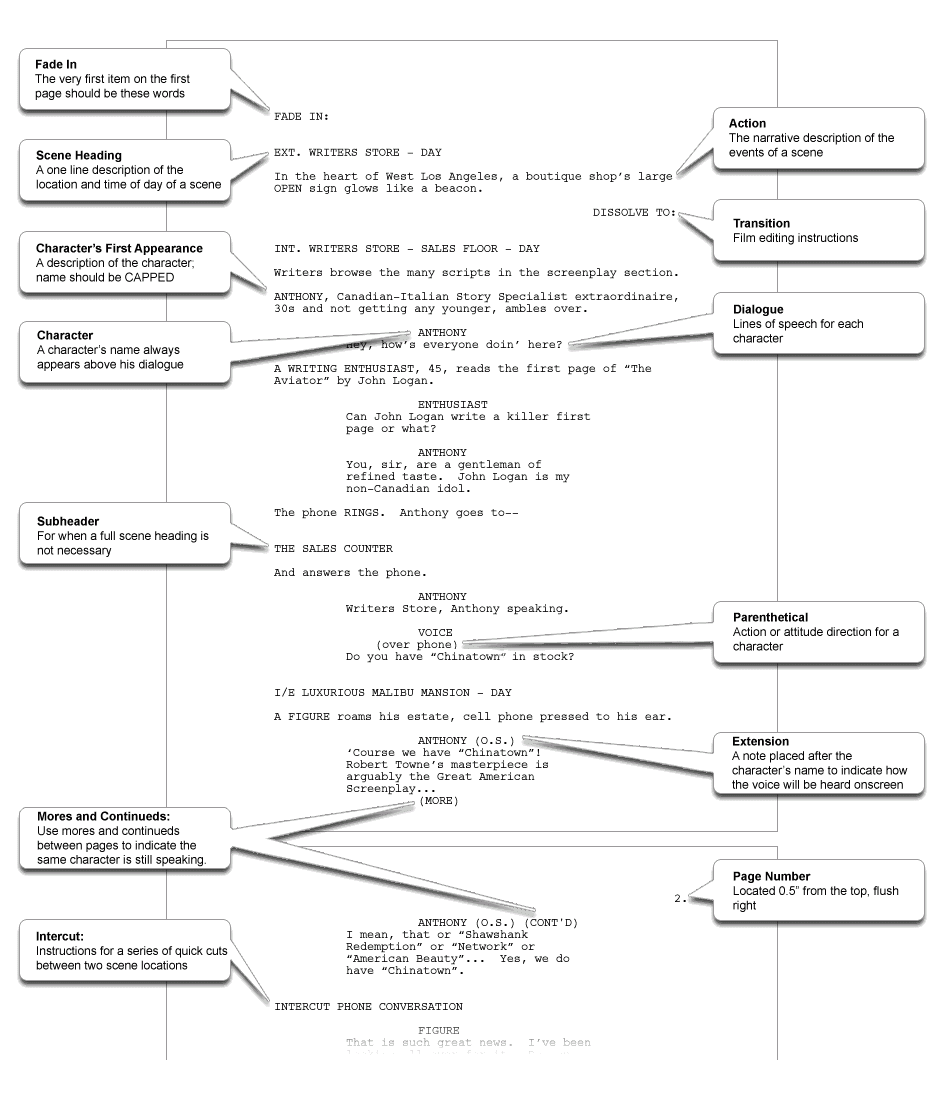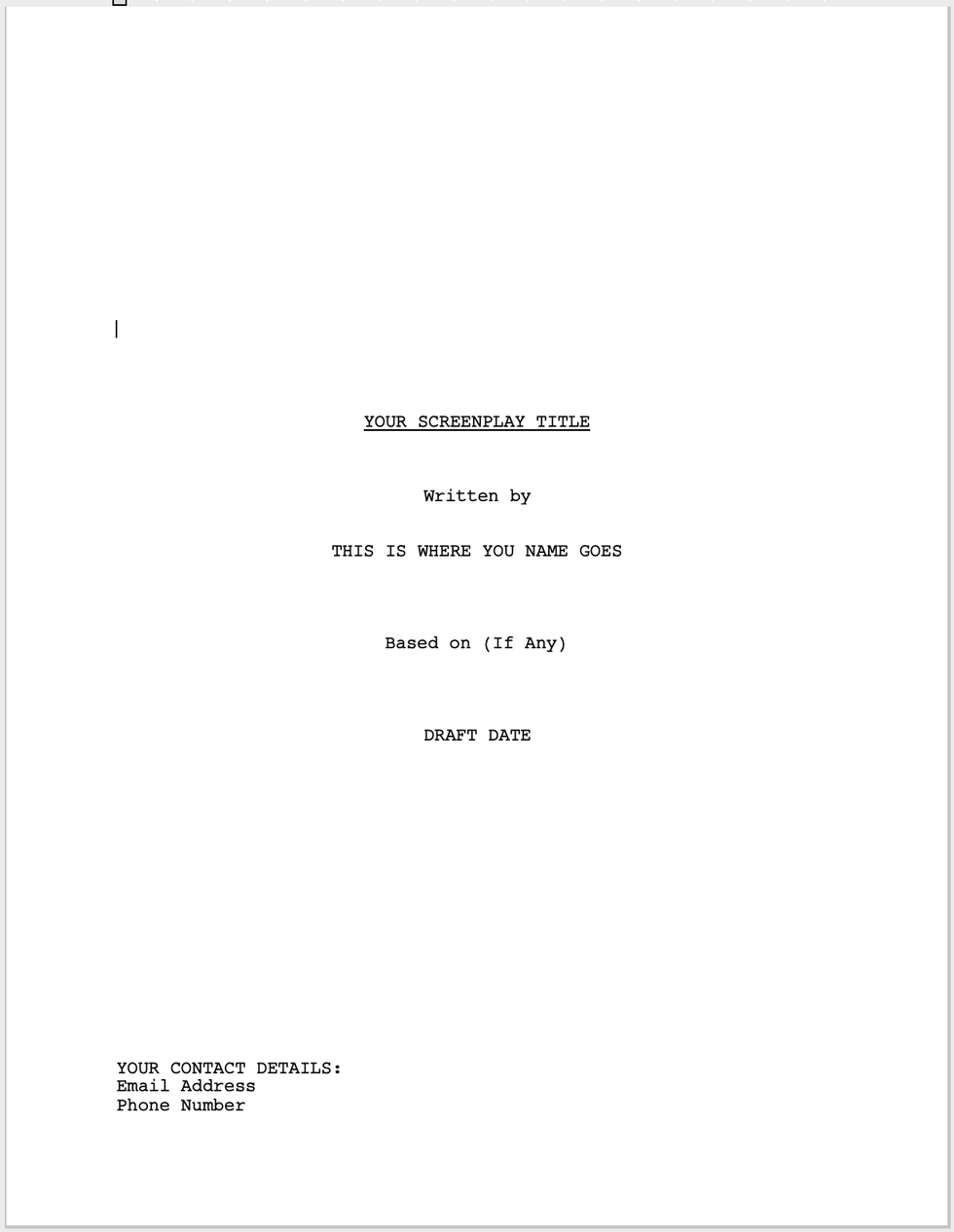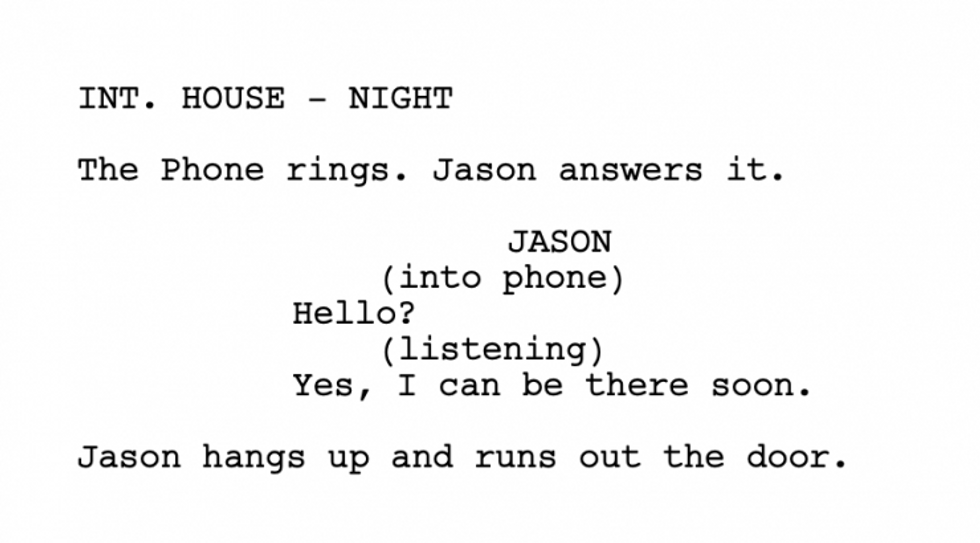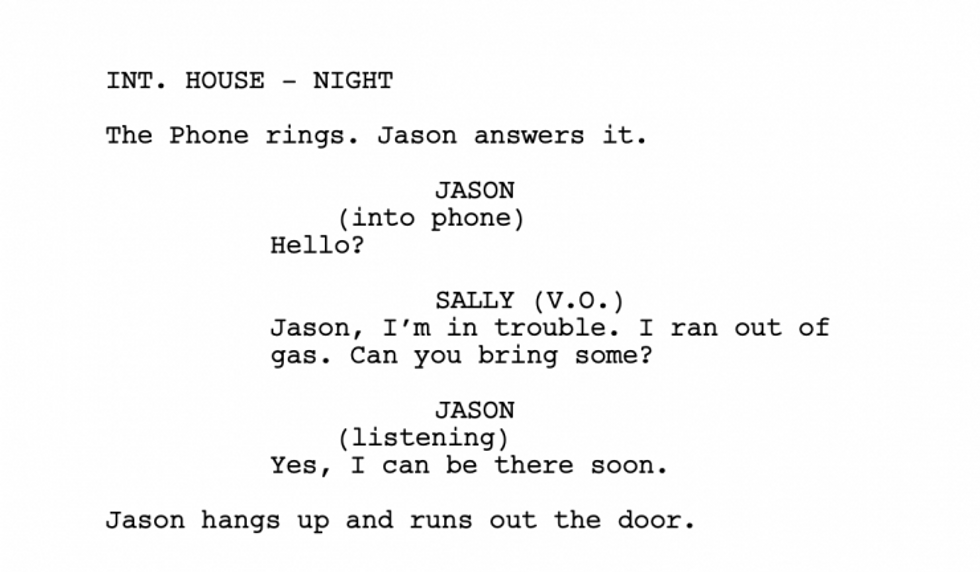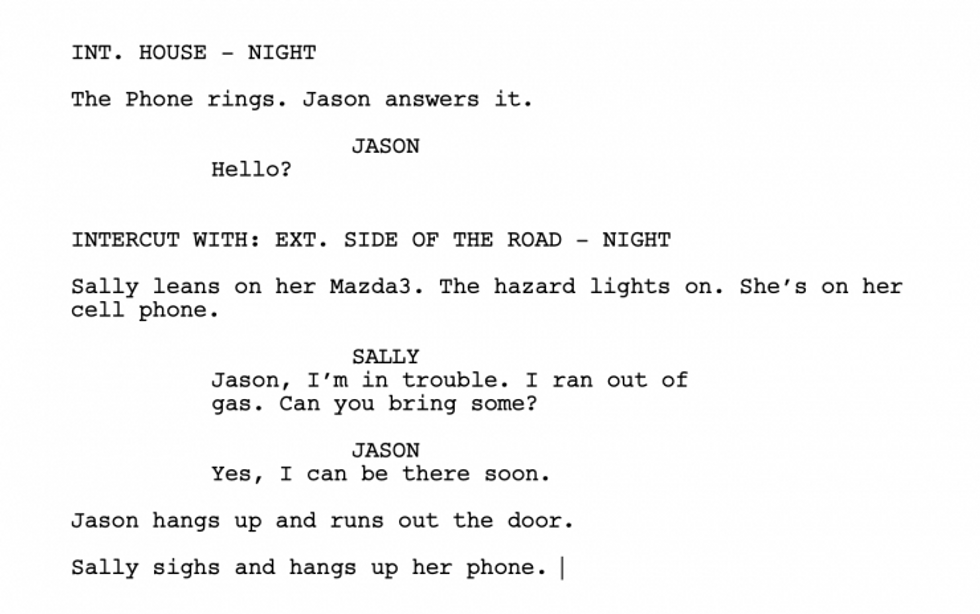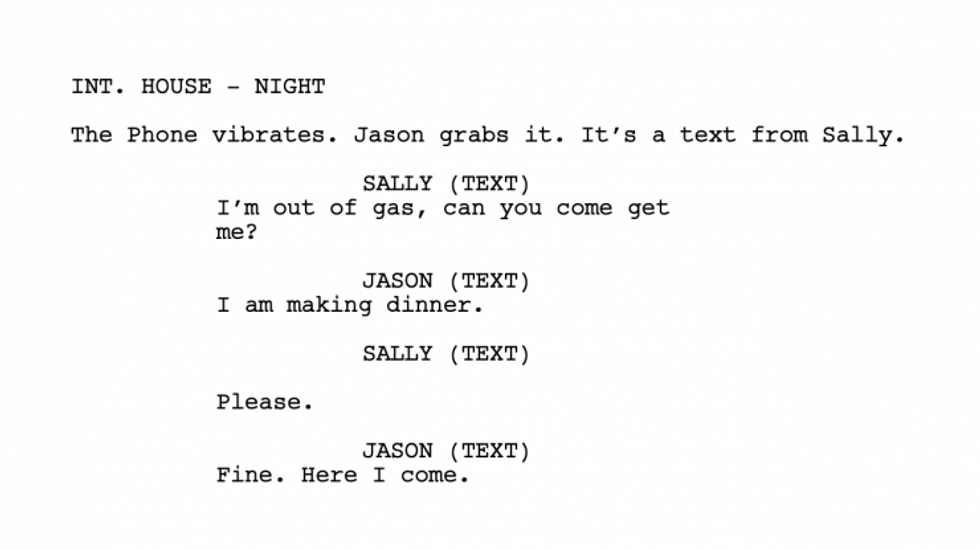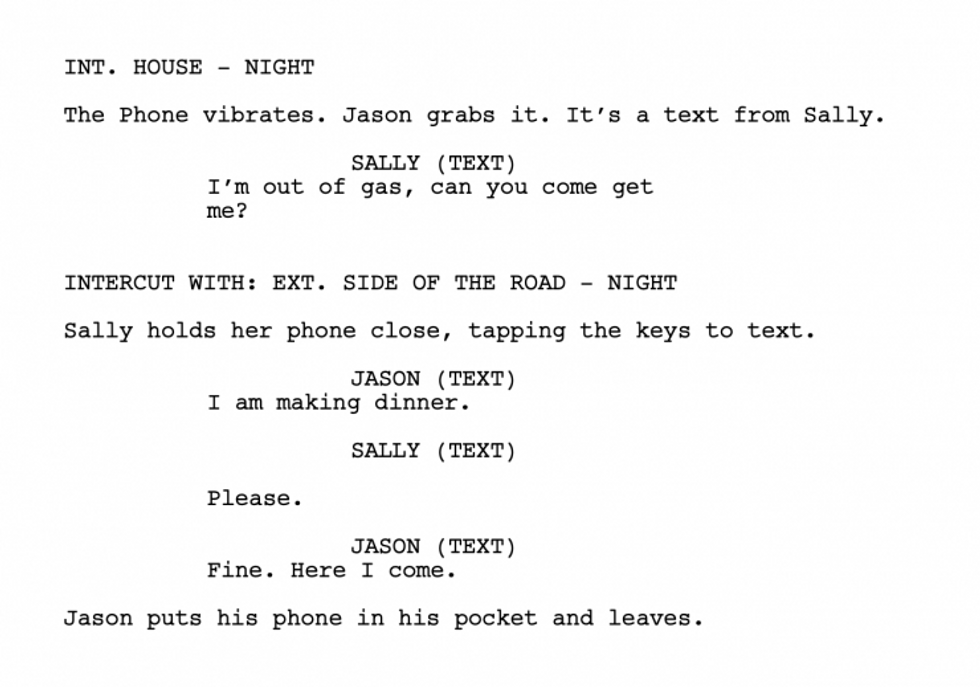How to Format Your Screenplay
Suppose you want to be a screenwriter. You have to master script format. We have your guide.
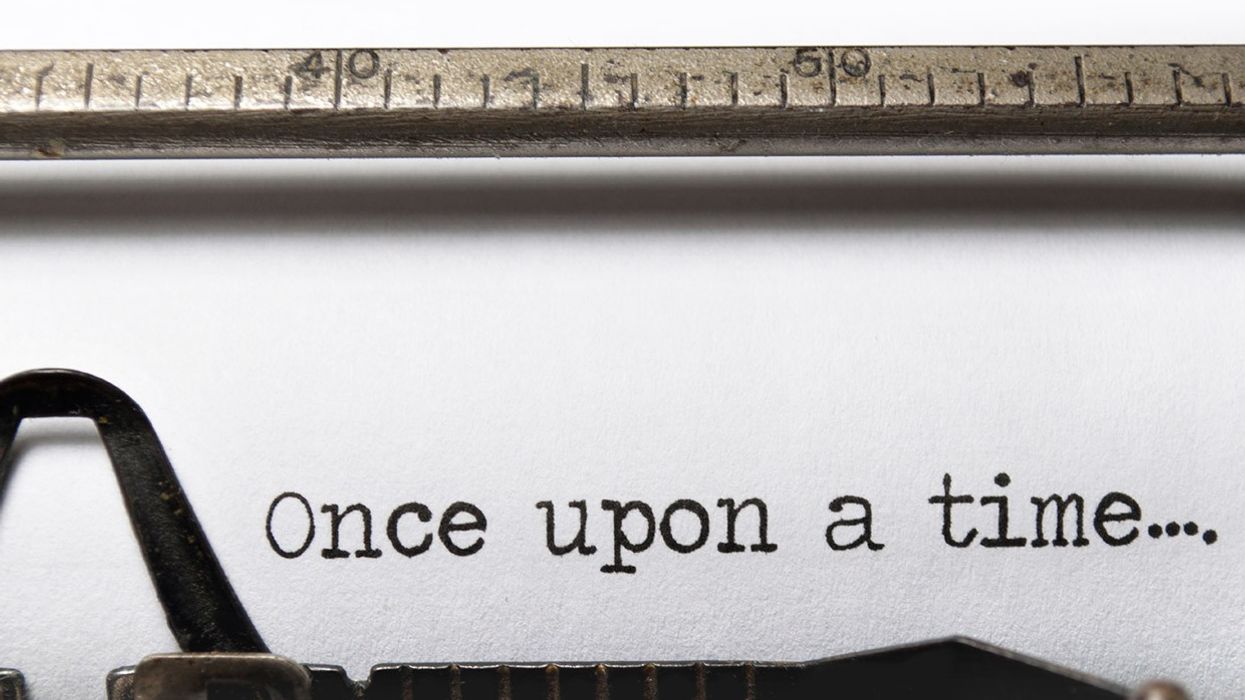
Of course, the most important part of writing is the story, but you're not going to get far in Hollywood if you can't get your ideas down onto the page. I feel like everyone is always so excited to write their story that they forget formatting their screenplay matters. Sure, what you write is just a blueprint for what happens on the screen, but there are some accepted ways for how to get that blueprint across to people.
Today we're going to go over basic screenplay format, show you script format options at an advanced level, and even explain some of the trickier things, like montages and phone calls—all the things your movie script template needs.
But before all of that, check out this video from Tyler Mowery, and let's talk after the jump.
The Perfect Guide to Script Format for Filmmakers
The actual hard part of writing is the storytelling aspect. The creation of characters and worldbuilding can also be complicated. But when it comes to putting things on the page, you have to make sure your ideas look professional.
So let's dive into the basics.
But First... What Is a Script?
A movie or TV script is the blueprint of the intended medium. The script will contain characters, action, dialogue, some stage direction, and even a few transitions. Every level of production will need a formatted version of the script to show actors, have sets made, and even plan the shots.
Mastering screenplay format is key to making all this happen.
Mastering Script Formatting with a Movie Script Template
The truth is, you can achieve everything in Microsoft Word and other programs, but formatting a screenplay can be a real pain. I promise you. It is worth saving money to buy or searching to find free screenplay software.
Screenwriting software like Final Draft, Celtx, and WriterDuet make it easy not to concern yourself with script format too much, but it's still important to learn. You may not have to worry about margins, typeface, or indentations, but you'll still need to know how to write action and dialogue, as well as what a slugline is and why the information included in it is so important.
That's why we wanted to give you some simple resources to help you understand the basics of screenplay formatting and take you through how to format a script. Because even if you understand everything that's going on in your screenplay when it comes to formatting, there will (hopefully) be other people looking at it that may not.
Remember, if your script gets selected to be turned into an actual film, it will need to be turned into a script breakdown sheet. So, if you don't take care of being clear and concise with your sluglines, action, and dialogue, then the director, DP, and 1st AD will have a hard time doing their job. Not to mention the script readers!
Luckily, screenplay formatting isn't rocket science. It just takes a little effort to wrap your head around several key concepts and elements... and once you do, you're off to the races.
Just take a look at this infographic screenwriting template from The Writer's Store.
That script writing example should be all you need when you sit down to write, besides your story idea. The Writer's Store also provides a helpful guide to the graph to break down everything you see inside.
The Basic Screenplay Formatting Elements
What does a script look like? Below is a list of items (with definitions) that make up the screenplay format, along with indenting information. Again, screenplay software will automatically format all these elements, but a screenwriter must have a working knowledge of the definitions to know when to use each one.
This script layout will help you understand how a script looks on the page.
Scene Heading
Indent: Left: 0.0" Right: 0.0" Width: 6.0"
A scene heading is a one-line description of the location and time of day of a scene, also known as a "slugline." It should always be in CAPS.
Example: EXT. WRITERS STORE - DAY reveals that the action takes place outside The Writers Store during the daytime.
Subheader
Indent: Left: 0.0" Right: 0.0" Width: 6.0"
When a new scene heading is not necessary, but some distinction needs to be made in action, you can use a subheader.
But be sure to use these sparingly, as a script full of subheaders is generally frowned upon. A good example is when there are a series of quick cuts between two locations. You would use the term INTERCUT and the scene locations.
Action
Indent: Left: 0.0" Right: 0.0" Width: 6.0"
This is the narrative description of the events of a scene, written in the present tense. Also less commonly known as direction, visual exposition, blackstuff, description, or scene direction.
Remember—only things that can be seen and heard should be included in the action.
Character
Indent: Left: 2.0" Right: 0.0" Width: 4.0"
When a character is introduced, their name should be capitalized within the action. For example: "The door opens, and in walks LIAM, a 30-something hipster with attitude to spare."
A character's name is CAPPED and always listed above his lines of dialogue. Minor characters may be listed without names, for example, "TAXI DRIVER" or "CUSTOMER."
Dialogue
Indent: Left: 1.0" Right: 1.5" Width: 3.5"
Lines of speech for each character. Dialogue format is used anytime a character is heard speaking, even for off-screen and voice-overs.
Parenthetical
Indent: Left: 1.5" Right: 2.0" Width: 2.5"
A parenthetical is a direction for the character that is either attitude or action-oriented.
With roots in the playwriting genre, today, parentheticals are used very rarely and only if absolutely necessary. Why? If you need to use a parenthetical to convey what's going on with your dialogue, then it probably just needs a good re-write. Only use them when you want to make absolutely sure the reader gets the emotion.
Extension
Placed after the character's name, in parentheses
An abbreviated technical note is placed after the character's name to indicate how the voice will be heard onscreen. For example, if the character is speaking as a voice-over, it would appear as LIAM (V.O.).
Transition
Indent: Left: 4.0" Right: 0.0" Width: 2.0"
Transitions are film editing instructions and generally only appear in a shooting script. Transition verbiage includes:
- CUT TO:
- DISSOLVE TO:
- SMASH CUT:
- QUICK CUT:
- FADE TO:
As a spec scriptwriter, you should avoid using a transition unless there is no other way to indicate a story element. For example, you might need to use DISSOLVE TO: to indicate that a large amount of time has passed. Make sure you hit the moods you want.
Shot
Indent: Left: 0.0" Right: 0.0" Width: 6.0"
A shot tells the reader the focal point within a scene has changed. Like a transition, I think you should use it sparingly since sometimes it takes away from the read. Make sure you use them with intent and to emphasize things.
Examples of Shots:
- ANGLE ON
- EXTREME CLOSE UP
- PAN TO
- LIAM'S POV
Screenplay Title Page Format
What does a screenplay look like? Your screenwriting software should make it easy for you to format the title page. Most title pages use standard Courier 12-point font. Remember, the secret to all of this is just simple and easy to read. There are only four things that should be on the title page of your script:
- The script title
- Your name
- The draft's date
- Your contact details
Check out this example I made in the proper screenplay format below.
Here's a little expansion on the date—you probably only need this to keep track of the drafts you send out. Most specs get sent without a date, so they always feel fresh.
As you can see, if your script is based on anything—a book, a fairy tale, your life, a news article, a video game, etc., then you put that on there too. But I am assuming most of you will be focusing on original ideas for now.
You might want to replace the TITLE with a graphic that shows the title. That's fine. Just make sure it is centered and doesn't take away room for the other information we need.
Once you have your title page, the rest will fall in line. Let's look at some specific script examples to see how to format these unusual situations.
How to Write a Montage in a Script
There are a few different ways to write a montage in your script.
How to Write a Montage That Takes Place in One Location
The first is to write a heading like MONTAGE: And you'd number the scenes like this...
INT. APARTMENT - DAY
MONTAGE:
1. Jason writes an article on his laptop
2. Jason bangs his head on the wall
3. Jason drinks whiskey and lies upside down
How to Write a Montage That Takes Place in Many Locations
Here's how it's done!
MONTAGE - VARIOUS
1. Jason writes in his apartment. GROANS.
2. Jason at a coffee shop. Still writing. SIGHS.
3. Jason boards a plane.
4. Jason in the Amazonian jungle, write. SCREAMS when he sees a snake.
Formulating Your Montage
Guess what? You totally don't have to number your scenes. You can use bullet points and dashes. You can even skip writing "montage" and just write it like a SERIES OF SCENES: or you can write it like normal with scene headers that later the director may decide could be jammed together in a montage.
The annoying thing about screenwriting is that the "rules" are all kind of bullshit. Sure, we have formatting and some other ideas, but when it comes to communicating to the audience, you just need to write clearly. The above tips will help you do that, but as we look at montage examples in screenplays, you'll see that's not always the case.
How Do You Format a Phone Conversation in a Screenplay?
Characters are going to make phone calls. It's just what happens in movies and TV shows unless they happen in the past or in a phoneless future. So how do you format those phone calls on your script pages?
Well, there are a few ways.
Formatting a One-Sided Phone Call in a Screenplay
In a one-sided phone call, we only get one side of the conversation. So it would look something like this...
How to Format a Phone Call Between Two People in a Screenplay
So if you have two characters talking to each other, but you're in one room with one character, you would indicate the unseen character's dialogue as a voiceover (V.O.).
How to Format a Phone Call Between Two People in a Screenplay with Two Locations
Finally, if you have two people in multiple locations, you will INTERCUT between both parties. You can use the slugline “INTERCUT — [LOCATION 1]/[LOCATION 2],” or you can establish each location with its own slug and description, and then INTERCUT.
How to Format Text Messages in a Screenplay
Maybe your characters aren't fans of making phone calls. They also text a lot. Well, how would you format text messages on the page? There are two kinds of texts to cover. There's a single text you get and a text conversation.
Let's start with the single text.
What If I Want to Break the Traditional Script Format?
Ask yourself one question: "Will my formatting change make the read more enjoyable or get the tone of the project across more clearly?"
If you answered "yes," then go ahead and break the rule. If you answered "no," then maybe don't.
Again, I hate seeing people making anything more complicated than that. Formatting is there as a guide. It's a way to say, "Hey, this is the way most professionals do it in many situations." There are no set rules.
But obviously, there are circumstances where you might want to switch it up. You might want to bold a word to make it stand out. You might want to write in ALL CAPS to emphasize that something big is happening. You might want to use italics to show annoyance at explaining something or underline an important clue.
These options and more are open to you. But you also do not have to do any of that. Your story will be the reason your script sells. Not the gimmicks. Not perfect formatting. I can tell you the more professionally formatted scripts are easier to read for assistants and therefore favored. But I have also seen sloppy ones sell for millions of dollars.
At the end of the day, just do what you think makes the most sense in the story. What conveys the ideas better?
It really is that simple. Just get writing.
